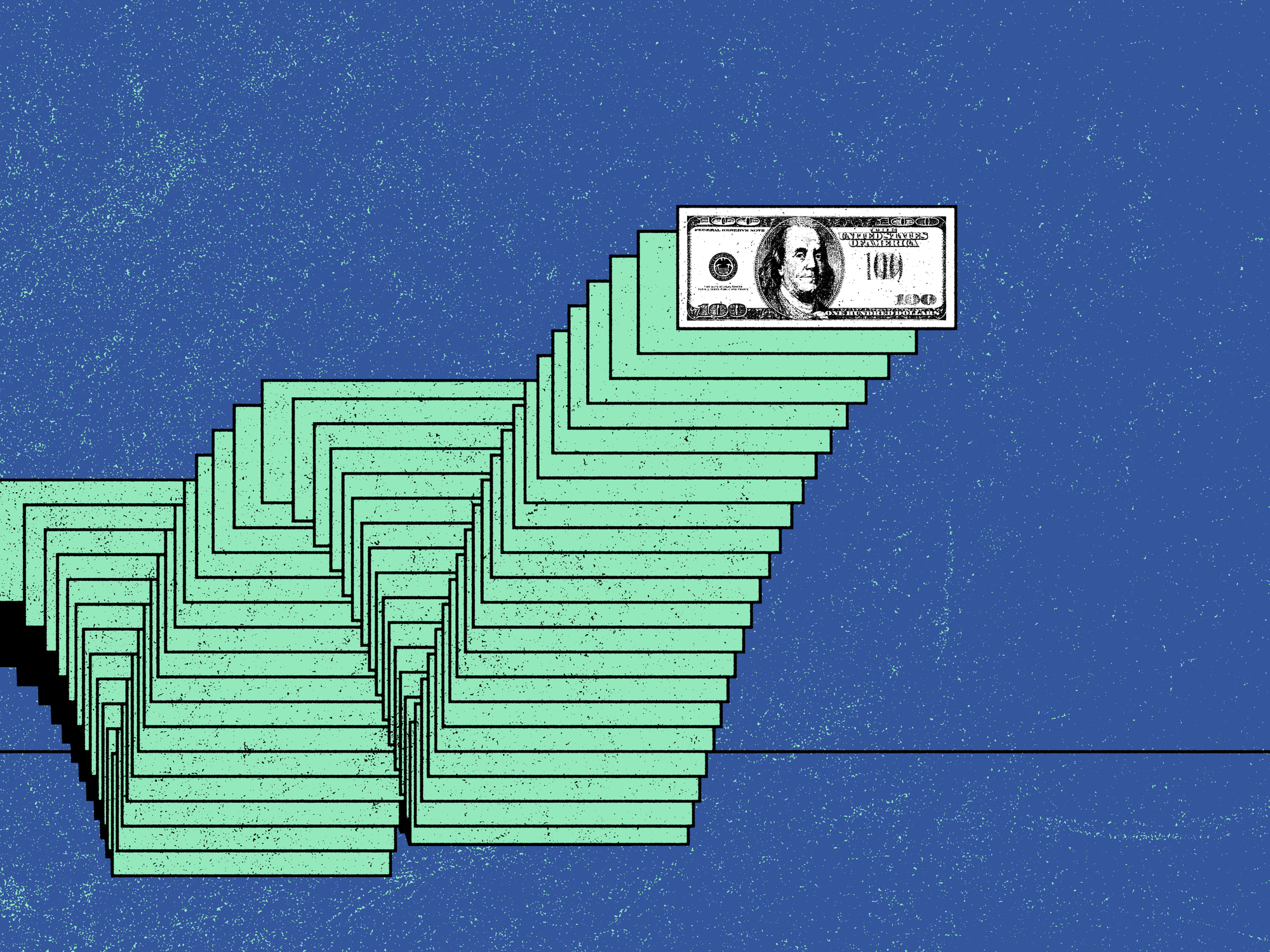529 Savings Plans Have More Uses -- But States Need to Catch Up
The new federal tax law allows families to use 529 college plans to pay tuition for kindergarten through high school. But doing so before state laws are revised to reflect the new rules could trigger a tax and a penalty.

Question: What are the new rules for using money in a 529 college-savings plan for kindergarten through 12th-grade expenses, rather than just college?
Answer: The new tax law expanded the definition of eligible expenses for 529s. You can now withdraw up to $10,000 from a 529 each year tax-free to pay tuition for kindergarten through 12th grade. You can still use 529 money tax-free for college expenses, too, with no annual limit. Eligible college expenses include tuition and fees, room and board (even an off-campus apartment for a student who goes to school at least half-time), books and a computer. For more information about eligible expenses, see the “Qualified Tuition Program” section of IRS Publication 970, Tax Benefits for Education.
The new tax law left some unknowns. Some states need to change their laws to coordinate with the new federal law. Otherwise, they could end up charging state income taxes and a 10% penalty for withdrawals that aren’t used for college, says Susie Bauer, senior vice president and 529 manager at Baird Private Wealth Management. Also, if you received a tax deduction for your contribution, you may have to repay it if you use the money for non-qualified expenses and your state doesn't change its rules. Contact your plan before taking money out of the 529 for K-12 tuition to make sure the withdrawal is a qualified expense in your state. If your state’s rules aren’t clear yet, you may want to wait a few months before taking a precollege withdrawal. More states should be clarifying their laws in the next few months.
From just $107.88 $24.99 for Kiplinger Personal Finance
Become a smarter, better informed investor. Subscribe from just $107.88 $24.99, plus get up to 4 Special Issues

Sign up for Kiplinger’s Free Newsletters
Profit and prosper with the best of expert advice on investing, taxes, retirement, personal finance and more - straight to your e-mail.
Profit and prosper with the best of expert advice - straight to your e-mail.
You may also want to adjust your investments. “If you’re going to take advantage of the K-12 tuition change, you need to take into account your time horizon,” says Roger Young, a senior financial planner at T. Rowe Price. Depending on your child’s age, you may be taking those withdrawals much earlier than you had originally intended, particularly if you invested in an age-based fund whose mix of stocks and bonds are tied to the year your child will start college. In that case, you may want to shift some money you plan to withdraw for K-12 expenses in the next few years to more conservative investments, so you won’t have to worry about market volatility when the tuition bill is due. And because you can change your 529 investments only twice per year, consider keeping the current money invested where it is but adding new contributions to conservative investments for short-term expenses, says Young.
Even though you can now use some money from your 529 for K-12 tuition, think carefully before taking that withdrawal. “With the shorter time horizon, you’re probably going to be more conservative and will probably have less gain potential,” says Young. “For people who aren’t in a high tax bracket, you have to ask: ‘Does this really make sense to me?’ ” The longer you keep the money growing in the account, the more time you’ll have to benefit from the tax-free gains for eligible expenses.
Profit and prosper with the best of Kiplinger's advice on investing, taxes, retirement, personal finance and much more. Delivered daily. Enter your email in the box and click Sign Me Up.

As the "Ask Kim" columnist for Kiplinger's Personal Finance, Lankford receives hundreds of personal finance questions from readers every month. She is the author of Rescue Your Financial Life (McGraw-Hill, 2003), The Insurance Maze: How You Can Save Money on Insurance -- and Still Get the Coverage You Need (Kaplan, 2006), Kiplinger's Ask Kim for Money Smart Solutions (Kaplan, 2007) and The Kiplinger/BBB Personal Finance Guide for Military Families. She is frequently featured as a financial expert on television and radio, including NBC's Today Show, CNN, CNBC and National Public Radio.
-
 Dow Adds 646 Points, Hits New Highs: Stock Market Today
Dow Adds 646 Points, Hits New Highs: Stock Market TodayIt was "boom" for the Dow but "bust" for the Nasdaq following a December Fed meeting that was less hawkish than expected.
-
 5 Types of Gifts the IRS Won’t Tax: Even If They’re Big
5 Types of Gifts the IRS Won’t Tax: Even If They’re BigGift Tax Several categories of gifts don’t count toward annual gift tax limits. Here's what you need to know.
-
 The 'Scrooge' Strategy: How to Turn Your Old Junk Into a Tax Deduction
The 'Scrooge' Strategy: How to Turn Your Old Junk Into a Tax DeductionTax Deductions We break down the IRS rules for non-cash charitable contributions. Plus, here's a handy checklist before you donate to charity this year.
-
 The 'Scrooge' Strategy: How to Turn Your Old Junk Into a Tax Deduction
The 'Scrooge' Strategy: How to Turn Your Old Junk Into a Tax DeductionTax Deductions We break down the IRS rules for non-cash charitable contributions. Plus, here's a handy checklist before you donate to charity this year.
-
 IRS Says You Made a Tax Return Mistake? A New Law Could Help You Fight Back
IRS Says You Made a Tax Return Mistake? A New Law Could Help You Fight BackTax Law Updated taxpayer protections change what the IRS must explain on error notices and how long you have to respond.
-
 Tax Refund Alert: House GOP Predicts 'Average' $1,000 Payouts in 2026
Tax Refund Alert: House GOP Predicts 'Average' $1,000 Payouts in 2026Tax Refunds Here's how the IRS tax refund outlook for 2026 is changing and what steps you can take now to prepare.
-
 New 2026 Tax Change Could Mean More for Your IRA and 401(k) Savings
New 2026 Tax Change Could Mean More for Your IRA and 401(k) SavingsRetirement Savings Here's how the new IRS inflation adjustments will increase the contribution limits for your 401(k) and IRA in the new year.
-
 3 Ways High-Income Earners Can Maximize Their Charitable Donations in 2025
3 Ways High-Income Earners Can Maximize Their Charitable Donations in 2025Tax Deductions New charitable giving tax rules will soon lower your deduction for donations to charity — here’s what you should do now.
-
 10 Retirement Tax Plan Moves to Make Before December 31
10 Retirement Tax Plan Moves to Make Before December 31Retirement Taxes Proactively reviewing your health coverage, RMDs and IRAs can lower retirement taxes in 2025 and 2026. Here’s how.
-
 When to Hire a Tax Pro: The Age Most Americans Switch to a CPA
When to Hire a Tax Pro: The Age Most Americans Switch to a CPATax Tips Taxpayers may outsource their financial stress by a specific age. Find out when you should hire a tax preparer.
-
 Three Critical Tax Changes Could Boost Your Paycheck in 2026
Three Critical Tax Changes Could Boost Your Paycheck in 2026Tax Tips The IRS predicts these tax breaks may change take-home pay in 2026. Will you get over $1,000 in tax savings?